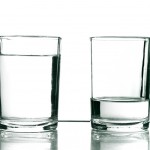
Tooth extraction is a very common surgical procedure and alveolar osteitis (dry socket) with an incidence reported to occur in 0.5% to 68% of cases. The aetiology of alveolar osteitis is unclear although risk factors are thought to include traumatic extraction, smoking, poor oral health and infection around the extracted tooth. Treatment is largely symptomatic, and chlorhexidine may have a beneficial preventive effect. Warm saltwater mouthwashes have also been long recommended although the evidence is mixed.
The aim of this review was the assess the effectiveness of warm saltwater mouthwashes in preventing incidence of dry socket following tooth extraction.
Methods
Searches were conducted in the Cochrane, PubMed, Ovid Medline, Google Scholar, OpenGrey, US National Institutes of Health Ongoing Trials Register (ClinicalTrials.gov) and the World Health Organization International Clinical Trials Registry (WHO clinical trials registry) databases. Randomised controlled trials (RCTs) of warm saline mouth baths following dental extraction published in English were considered. Two reviewers independently screened the studies, extracted data and assessed risk of bias. The primary outcome was alveolar osteitis.
Results
- 8 RCTs involving a total of 1,404 patients were included
- 5 studies compared salt water with chlorhexidine (CHX), one compared salt water with other antimicrobial rinses and 2 with no rinse.
- One study was considered to be at low risk of bias, 2 at unclear risk and 5 at high risk of bias.
- 3 studies comparing CHX with salt water reported lower incidence of alveolar osteitis with CHX. Meta-analysis demonstrated higher odds of dry socket in patients using saltwater mouthwashes OR = 4.53 (95%CI; 1.43 to 14.33).
- In other comparisons with antimicrobial rinses saltwater has higher levels of alveolar osteitis.
- 2 studies compared saltwater with no rinse with lower levels of alveolar osteitis in patients using saltwater. Meta-analyses found lower odds of dry socket in patients using saltwater OR= 0.40 (95%CI; 0.28 to 0.56).
Conclusions
The authors concluded: –
Warm saltwater mouth baths have potential in reducing postoperative complications such as alveolar osteitis following a routine or surgical extraction of teeth, with its benefits exceeding the risk of no antimicrobial rinse.
Comments
A good range of databases have been searched although restricting inclusion to English language papers may have excluded some relevant studies. A majority of the included studies (6 out of the 8 studies) reported on impacted 3rd molars with just two reporting on routine extractions one of which we have previously discussed (Dental Elf – 14th Jan 2014). Only one of the included studies was considered to be at low risk of bias and that in many studies the preparation and dosing of the saltwater mouthwashes was not detailed. Previous reviews have demonstrated (Dental Elf – 13th Mar 2017, Dental Elf – 23rd May 2017) a beneficial effect of chlorhexidine on alveolar osteitis so a better performance that salt water may be anticipated. As the authors highlight saltwater performed better than no rinse. However the findings should be viewed cautiously and additional high quality studies with clearly reported dosage and compliance information would be helpful.
Links
Primary Paper
Adekunle AA, Egbunah UP, Erinoso OA, Adeyemo WL. Effectiveness of warm saline mouth bath in preventing alveolar osteitis: A systematic review and meta-analysis. J Craniomaxillofac Surg. 2021 Sep 4:S1010-5182(21)00195-5. doi: 10.1016/j.jcms.2021.09.001. Epub ahead of print. PMID: 34509363.
Other references
Dental Elf – 14th Jan 2014
Trial suggests that post extraction use of warm saline mouth rinse reduces complications
Dental Elf – 23rd May 2017
Trial suggests that post extraction use of warm saline mouth rinse reduces complications
Dental Elf – 13th Mar 2017
Chlorhexidine gels and rinses reduce dry socket after third molar extraction
